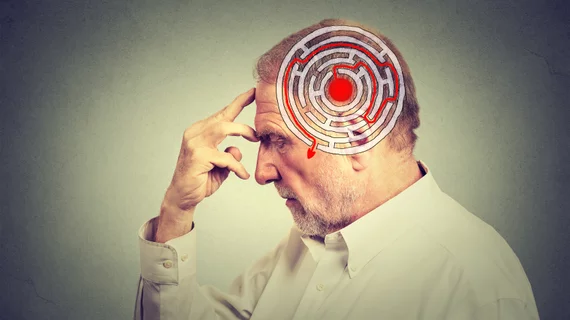Radiologists checking CT images for stroke should also keep an eye out for COVID-19, experts advised Friday.
Such emergency imaging of the head and neck also captures the top of the lungs, where there may be ground glass opacities. King’s College London researchers found physicians could reliably diagnose the novel coronavirus from CT angiography scans when this indication was present, along with predicting increased risk of death.
Lead author Tom Booth, MD, and colleagues said their findings—published in the American Journal of Neuroradiology—have important implications for the field.
“These are useful results because the changes are simple for radiologists and other doctors to see,” Booth, senior lecturer in neuroimaging and consultant physician at King’s College Hospital, said in a Sept. 18 statement. “This is ‘free information’ from a scan intended for another purpose yet extremely valuable.”
To reach their conclusions, the team retrospectively analyzed CTA images from 225 patients with suspected stroke, treated at one of three emergency care centers in London. Ground glass opacities were present in 22.2% of patients and had high interrater reliability and, when compared to RT-PCR lab testing, solid sensitivity and specificity for COVID-19 (at 75% and 81%, respectively).
Booth et al. noted that these findings may allow for the earlier allocation of personal protective equipment, while also aiding with staff deployment, triage and contact tracing.
“This study demonstrates that the presence of apical GGO on carotid CTA in patients presenting with suspected acute stroke is a simple, reliable, and accurate diagnostic and prognostic COVID-19 biomarker,” the authors concluded in AJNR. “These findings mandate vigilance in apical assessment by all radiologists and clinicians involved in acute stroke care, particularly relevant given the sensitivity of currently available SARS-CoV-2 RT-PCR testing,” they added.

